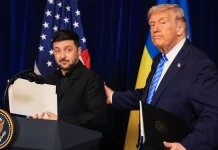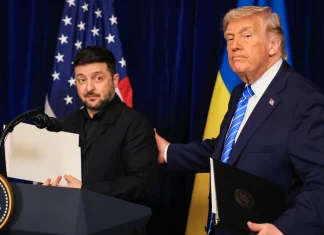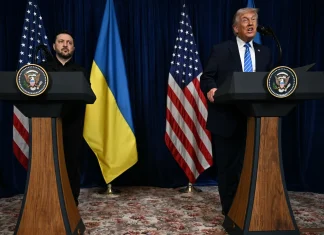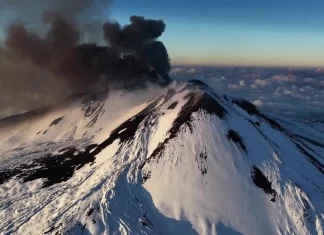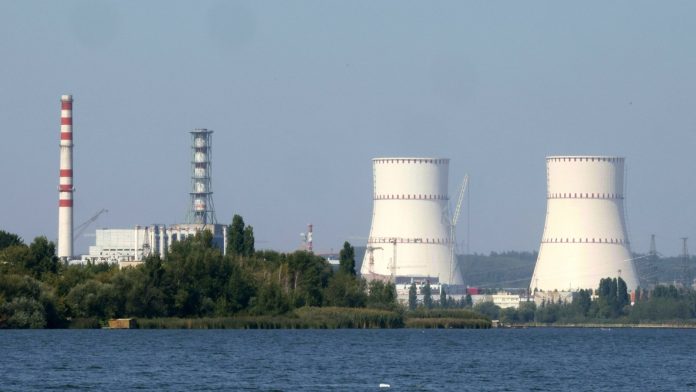
Under Fire: The Heavy Toll of Ukraine’s Daring Drone Strikes on Russian Soil
On a night charged with symbolism and defiance, Ukraine launched a series of bold drone attacks striking deep into Russian territory, rattling one of Russia’s largest nuclear power stations and igniting a massive blaze at a key fuel export terminal on the Baltic coast. Beneath the headlines and the thick plumes of smoke lies a story of a war that refuses to simmer down, even as leaders on both sides speak, cautiously, of peace.
The Unseen Front Line Beyond the Trenches
August 24th is a day wrapped in deep meaning for Ukrainians — marking their bold declaration of independence from the Soviet Union in 1991. But in 2023, the day also rang loud with the roar of drones overhead and the steady crackle of fire. Ukraine’s state-of-the-art unmanned aerial vehicles conducted a remarkable, coordinated assault on Russian infrastructure, proving that this conflict has morphed from the dusty trenches and artillery barrages of 20th-century warfare to a modern-day theater of cyber and aerial precision strikes.
According to the Russian Ministry of Defense, over 95 Ukrainian drones were intercepted across more than a dozen Russian regions that day — a staggering volume revealing both Ukraine’s tactical reach and Russia’s growing vulnerability. As night fell, one particular incident grabbed global attention: The Kursk nuclear power plant, located just 60 kilometers from Ukraine’s border, was caught in a deadly crossfire.
Kursk Nuclear Plant: A Brush with Disaster
At the heart of the incident was a drone that detonated near the plant just past midnight, triggering an auxiliary transformer fire that forced a dramatic 50% cutback in the output of reactor number three. “There were no injuries and radiation levels remain stable,” reassured plant officials, yet every word rang tense with the underlying reality — any damage to nuclear infrastructure could escalate into disaster.
To put this in perspective: Kursk is not just any power plant. It is a linchpin in Russia’s energy grid, supplying power across a vast swath of the western side of the country. Its reactors have become silent characters in this war drama — three down or offline due to damage or maintenance, and the one hit above now running at half capacity.
International eyes, including those of the International Atomic Energy Agency (IAEA), are unwaveringly fixed on this flashpoint. A spokesperson for the IAEA emphasized the critical imperative: “Every nuclear facility must be protected at all costs — not only for national security but for global safety.” The near miss at Kursk stirred fears not just in Russia or Ukraine, but worldwide, echoing haunting memories of past nuclear emergencies.
Flames on the Baltic: The Ust-Luga Terminal Attack
But Kursk was just the opening act that day. Nearly a thousand kilometers north, in Russia’s Leningrad region bordering the frost-kissed waters of the Gulf of Finland, Ukrainian drones rained down on the sprawling Ust-Luga fuel export terminal. This facility, operated by Novatek, is a critical artery in Russia’s energy exports, processing everything from naphtha to jet fuel — commodities destined for Asia and Europe alike.
Images and amateur video captured on Russian Telegram channels showed a drone careening directly into the complex. Moments later, flames erupted into the night sky, throwing up a towering black plume visible for miles. Alexander Drozdenko, the regional governor, conveyed grim urgency: “Firefighters and emergency crews are battling the blaze as we speak—no casualties have been reported.” Yet, the symbolism was unmistakable — Ukraine striking at the very economic veins fueling Russia’s war machine.
For locals, the scene was surreal and sobering. “The fire lit up the sky like daylight,” recounted Marina Petrova, a Leningrad resident. “You could smell the smoke even from kilometers away. It’s as if the war suddenly caught fire in our backyard.”
Ripples Across the Landscape: More Strikes and Disrupted Lives
Ust-Luga was not alone in feeling the impact. Farther south, Ukrainians targeted the industrial hub of Syzran in Samara region, hitting what officials say was either an oil refinery or a critical industrial site. The attack, which tragically injured a child according to the regional governor, disrupted vital energy production. Rosneft, Russia’s oil giant, reportedly had to halt operations following the damage.
These attacks, far beyond the dusty endless front lines, highlight an evolving war strategy: targeting logistical and infrastructure nodes rather than engaging in pitched battles alone. Kyiv views these strikes not as acts of aggression but as retaliatory and tactical moves to degrade Moscow’s military logistics and war-fueling economy.
The Wider War: A Drone-Centric Future?
What does this tell us about the nature of warfare today? For one, drones — once novelty tech — have become lethal tools reshaping conflict dynamics. They offer precision, agility, and a psychological edge. Ukrainian forces, despite being outmatched in many traditional areas, have harnessed these UAVs to penetrate deep into Russian territory. Their successes ignite debates about the future of defense, the sanctity of civilian infrastructure, and the bloody dance of war in global hotspots.
With 2,000 kilometers of contested front lines weaving through Eastern Europe, such strikes underscore a sobering reality: this is no frozen conflict. It is alive, shifting, and escalating — with innocent civilians often caught in the crossfire.
A Personal Reflection
As you absorb these developments, pause to consider the human stories behind the headlines. The engineers racing to contain nuclear fires. The firefighters thrown into night battles with terrifying blazes. The families shuttering windows to block out black smoke, wondering how many more strikes until the war truly feels endless.
What do these strikes reveal about resilience — not just of states, but of people? How do we reckon with the increasing militarization of technology and the peril it spells for nuclear sites and civilian hubs alike?
In an era where diplomacy talks quietly and drones roar loudly, Ukraine’s aerial strikes on the Kursk plant and Ust-Luga terminal echo far beyond territorial disputes. They challenge our collective conscience about war’s cost and the desperate yearning for peace in a fractured world.
In Conclusion
The night Ukraine’s drones darkened the Russian skies serves as a vivid reminder: conflict today is as much about control of skies and supply chains as it is about boots on the ground. For anyone tracing the pulse of this global crisis, the question remains—how long can fragile power plants and distant fuel terminals withstand the storms of war? And, most poignantly, when will the echoes of these drone strikes be replaced not by fire and smoke, but by silence and healing?




